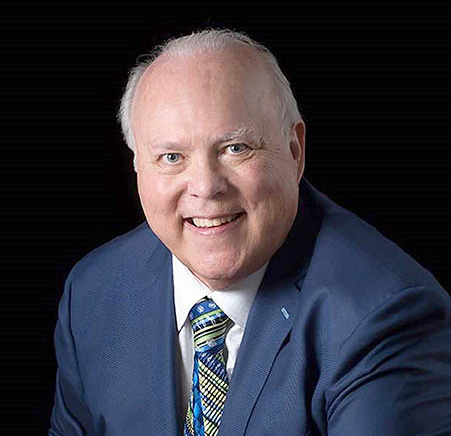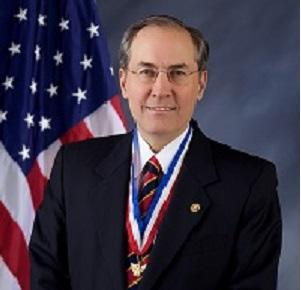Most Popular
This page shows the most popular TTA blog posts all time.
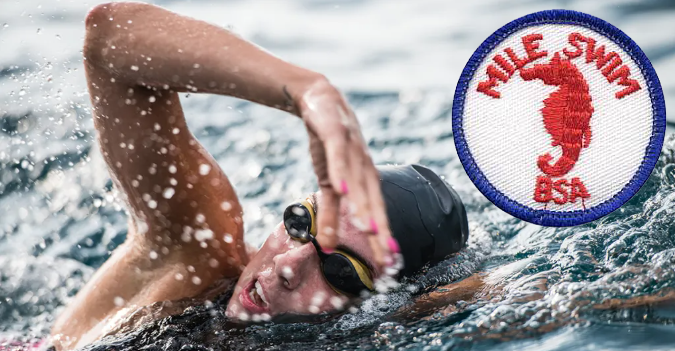
Aquatics
The Mile Swim Scouting America award was introduced in 1961 by the Scouting America Health and Safety Service. The original purpose of the award was for Scouts to learn to swim a mile safely with ease. It was, and remains, a challenging recognition that contributes to fitness and safety. The last time the award requirements were updated was in 1981 when the purpose shifted from a worthwhile accomplishment promoting both safety and physical fitness to “encourage the development of physical fitness by introducing the youth to swimming as regular exercise.” Four hours of required training before swimming the mile was added as a requirement.
Drawing from feedback gathered from Scouting America Aquatics personnel at camps nationwide, the revised Mile Swim Scouting America award is refocusing on enhancing swimming stroke effectiveness and efficiency, particularly for individuals seeking improvement. Most Scouts who can walk or bike on level ground for an hour or so without stopping will likely have enough stamina to swim a mile and there are numerous other Scouts BSA programs that promote and develop regular exercise. The Mile Swim Scouting America award purpose is to build confidence and improve water competency.
UPDATED SCOUTING AMERICA Mile Swim Award Requirements:
- Successfully complete the Scouting America swimmer test: Jump feetfirst into water over the head in depth, level off, and begin swimming. Swim 75 yards in a strong manner using one or more of the following strokes: sidestroke, breaststroke, trudgen, or crawl; then swim 25 yards using an easy, resting backstroke. The 100 yards must be completed in one swim without stops and must include at least one sharp turn.
- Learn through discussion and application how skill, stamina, stroke selection, and pace influence distance swimming.
- Pre-qualify for the mile by either swimming continuously for ¼ mile or otherwise demonstrating ability to the satisfaction of a counselor approved by the local council.
- Swim one mile under safe conditions over a course approved by the counselor supervising the swim.
Program Implementation
The revised Mile Swim Scouting America requirements are effective immediately (Spring/Summer 2024). It is recognized that many Scouting America camps will already have planned their camp summer aquatics program. Those camps may continue to present the previous (1981) version of the award program; however, all Scouting America Camps and Mile Swim Scouting America Counselors should plan on implementing the new Mile Swim Scouting America requirements for their 2025 programs. The Scouts BSA Mile Swim Emblem (SKU 245) and the Mile Swim Pocket Certificate (SKU 34394) remain unchanged. These recognition items are available at scoutshop.org. Award application and support materials can be found in the 2024 version of Scouting America Aquatics Supervision No. 34346
The Mile Swim Scouting America aquatics award is the ultimate recognition of Scouts and Leaders swimming prowess. It is hoped that this revised version of the award will encourage more Scouting America members to take the plunge and achieve this award.
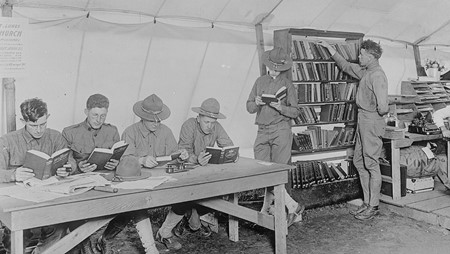
Camping
Ninety years ago, we made the very first standard-issue backpack for the Boy Scouts, the Yucca Pack. Ever since then, Diamond Brand Gear’s partnership with Scouts has been one of the most enduring and impactful parts of our legacy as a company.
It was crafting durable, top-quality goods for Scout camps and councils — from bags and gear to our flagship canvas wall tents and packable Scouting tents — that first marked our entry to the world of gear craftsmanship.
It’s only fitting, then, that we honor this partnership as the title sponsor of this year’s Scouting America National Outdoor Conference.
Why we’re proud to be 2021 Scouting America National Outdoor Conference sponsors
As the largest biennial gathering for Scouting America employees and volunteers, we’re thrilled to collaborate on such a key cornerstone of leadership in Scouting today. (And we were happy to donate commemorative messenger bags made from reclaimed tent materials, too!) Our support for the Scouting community goes far beyond a weekend’s event, though.
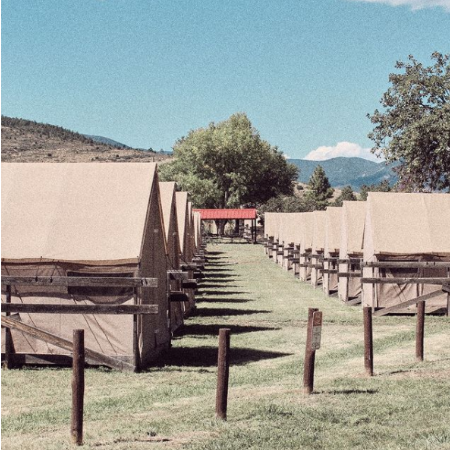
Tested by us, trusted by Scouts
From Camp Daniel Boone in North Carolina to the 137,000-acre Philmont Scout Ranch in New Mexico, our tents, made by hand in the Blue Ridge foothills, are favored by Scout camps across the country for a reason. We craft them to last, using only the most durable of fabrics, sealed seams, triple reinforced corners and sturdy grommets. Tested in the harshest of conditions, and with an in-house repair shop to boot, our tents are designed to keep powering scouts’ adventures for generations.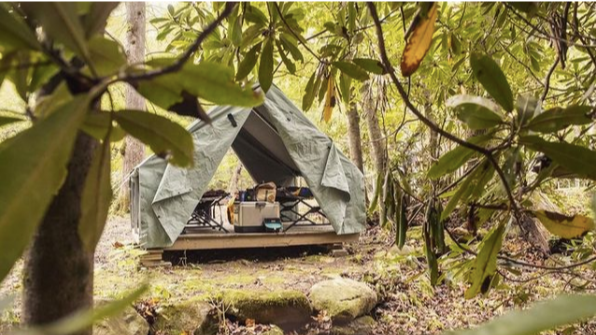
Have any upcoming Scouting adventures of your own? Feel free to check out more of our time-tested, handcrafted gear for Scouts by tapping the button below. Your partners in adventure,The Diamond Brand Gear team
This article is sponsored by Diamond Brand as part of their great donation to the 2022 National Outdoor Conference.
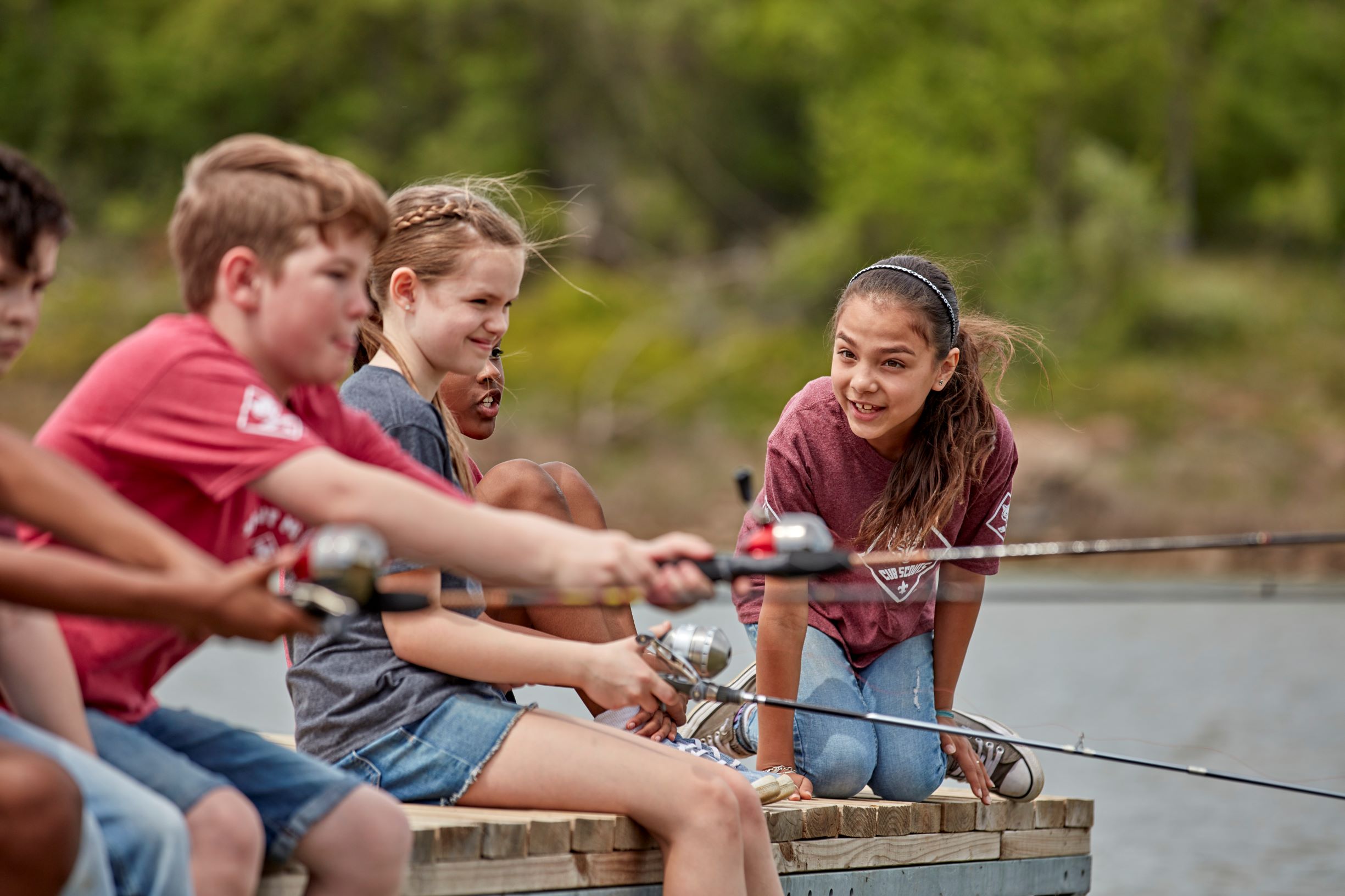
Fishing
Great news for Cub Scouts, as of June 1, 2024, there is a fishing adventure in every Cub Scout rank! Lion Scouts up to Arrow of Light Scouts can earn fishing elective adventures as they progressively learn how to become an accomplished angler. Fishing holds a special place in Scouting history, being one of the original merit badges, and recent surveys have consistently ranked it as one of the top outdoor activities. It’s no wonder that fishing serves as a fantastic recruiting tool for new Scouts and families alike. Fishing also retains Cub Scouts in the program because it is fun, builds useful skills and challenges them on so many levels. Moreover, fishing isn’t just a temporary activity; it’s a lifelong pursuit that Cub Scouts and their families can continue to enjoy together. Furthermore, fishing has the power to reignite the passion of those who may have drifted away from Scouting, as it fosters a sense of community within packs, where knowledge and skills are shared and passed down through generations, much like cherished traditions.
How does it work?
Each rank has specific requirements for fishing elective adventures. In addition, there are den leader resources on for each rank that will outline the basic requirements for earning the fishing elective adventures available on Scouting.org that will launch on June 1, 2024. These requirements emphasize fishing safety and basic fishing knowledge such as fish identification, fishing equipment, biology, casting skills and knots. The adventure always has a fun trip to go fishing with their pack and adult leaders.
How do Cub Scout leaders make it successful?
Fortunately, the Scouting America Certified Angler Instructor Working Group has been preparing for this for several years. They have created an extensive network of more than 2,000 Certified Angling Instructors (CAI) and Angling Educators (AE) to assist councils with their fishing programs. CAIs and AEs can teach fishing basics to parents and Cub Scout leaders and help them create successful fishing outings and provide fun programs. Leaders are encouraged to contact their local council fishing committee, sign up for an Angling Educator Class, or visit Scouting America Fishing for more information about Scouting’s Cub Scout fishing resources.
Fishing is more than fun!
The bottom-line is that fishing is a family-friendly, safe, and fun hands-on activity that is an excellent addition to Cub Scout pack programming. It is inexpensive to start a fishing program and teaches Scouts hand-eye coordination, cooperation, team skills, goal setting, environmental awareness, patience, outdoor survival, persistence, problem solving, friendly competition and at the end of the day … storytelling. Help a Scout tell a great fish tale by taking them on a fishing adventure!
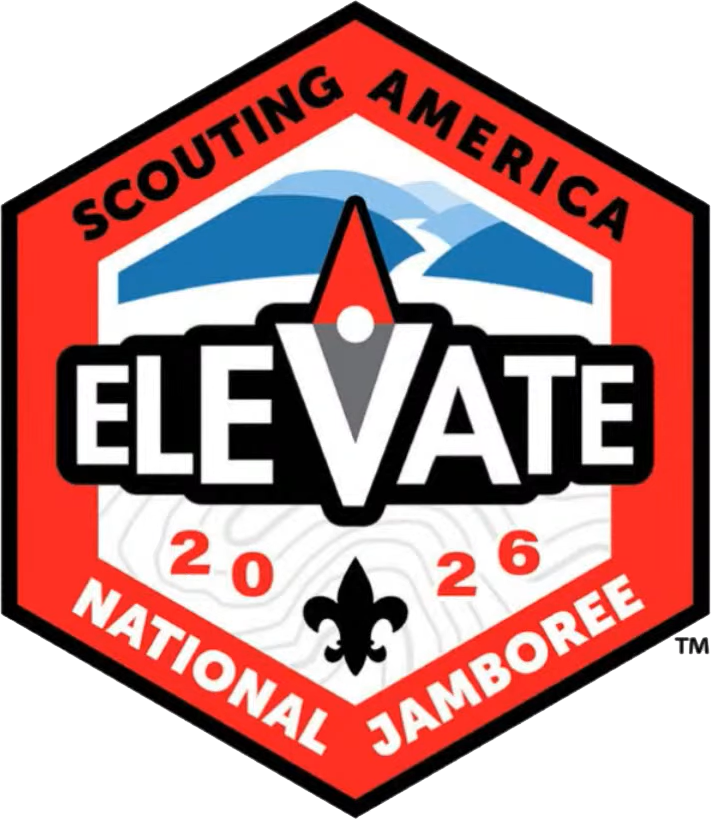
National Jamboree
The next National Jamboree will be held July 22-31, 2026, at the Summit Bechtel Reserve in Glen Jean, WV. In case you have not heard, the theme is ELEVATE and this event will ELEVATE your Scouting and will be a life changing experience not just for your Scouts but for you as well.
So what is a Jamboree? It is Scouting’s premiere event where we gather with over 10,000 Scouts and Scouters who come together to celebrate the spirit of Scouting. The Jamboree is a life-changing experience for both youth and adults who attend. The memories and experiences they have last a lifetime. Friends that are made become lifelong companions and the shared experiences are talked about around campfires for years to come.
So you don’t want to miss out on this opportunity as it only comes around every few years. If you miss this one the next one won’t be until 2029.
Here are a few keys to ELEVATE your Jamboree knowledge.
- ELEVATE your community and learn that Scouting is bigger than just my unit. We plan to have an arena show (or two) to gather the entire Jamboree together to celebrate Scouting and have a great time. it is a sight to see everyone together and to help youth to understand that Scouting is bigger than just my unit, district or council. Scouting is all of us and we will showcase this when we bring everyone together.
- ELEVATE your Scouts by helping them come to the Jamboree! The Jamboree, like most things in Scouting, is only successful when we all work together. We need you to help promote the Jamboree to your unit, your district, your council and to your friends. We need you to help fill contingents of youth, so they do not miss this once in a lifetime event. Most Scouts will only have one opportunity to experience a Jamboree as a youth, so make sure that they don’t miss out.
- ELEVATE your Scouting Journey! The Jamboree relies on great volunteers to help us in all aspects of the event. We need people to run programs, help in administration, operations and logistics to name a few. There is a job for you! Like other parts of Scouting if there is something you like to do, you can do it at the Jamboree. So look to be a part of the largest “staff” in Scouting.
- ELEVATE your reach. If you are looking for some resources to help you get the word out, make sure to check out the Brand Center. Here you will find some social media ready photos and videos that you can share. You will also find the Jamboree “ELEVATE” theme logo and brand guidance. Click on this link to take you straight to the Jamboree resources. https://scouting.webdamdb.com/bp/#/folder/13228711/. Go take a look now at the great images, and videos and share a couple on your social channels… I’ll wait…
- ELEVATE your awareness. Now that you have seen (and shared) the videos, you are asking “How do I sign up?” Registration will open this fall, but until then keep up to date by signing up to receive notifications from us by visiting www.jamboree.scouting.org. Here you will find all the information you need about the Jamboree. Bookmark the site as this will be your main source of information for all things Jamboree. If you did not get a chance to see it, you should also check out the “Trek on Tuesday” where despite some technical difficulties, we shared some great information about the Jamboree. You can find that discussion here. – https://www.youtube.com/live/WOOKLGAp2Cg
The National Jamboree is Scouting premiere event so you definitely do not want to miss it. Make your plans now to participate as a contingent member or on the Jamboree Service Team (Staff). This will be our first Jamboree as Scouting America and you can’t say you have been to every Scouting America Jamboree if you miss the first one! Keep watching for more information and to get signed up.
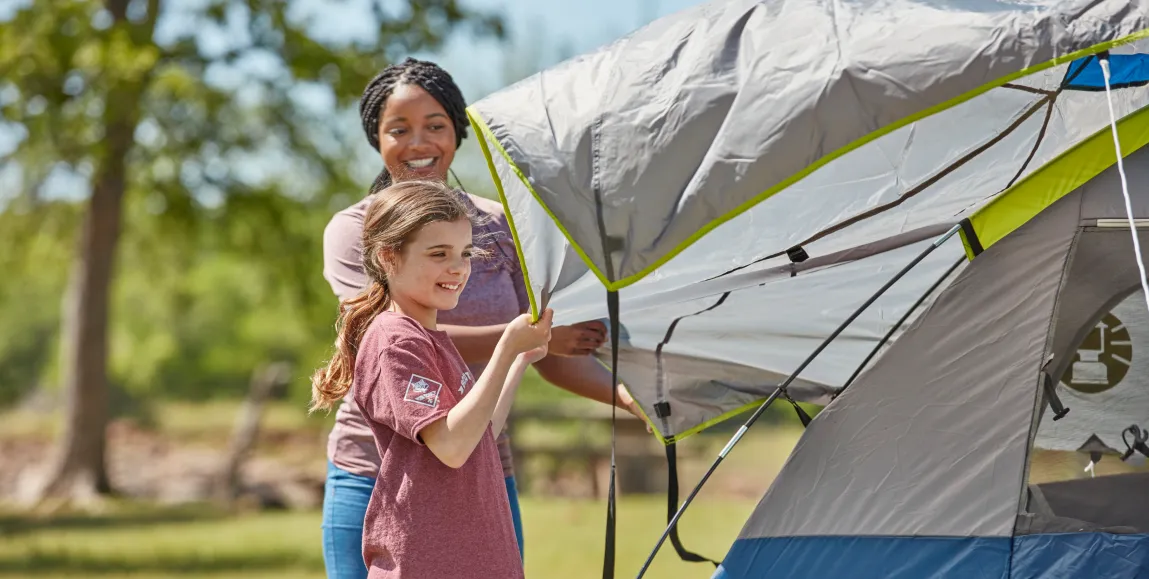
Camping
On June 1st, Cub Scouting unveiled eagerly awaited updates, bringing new energy and opportunities for Cub Scouts to explore the great outdoors. The updated Cub Scout program has a significant new number of outdoor focused adventures that can be a great addition to your district or council event.
Several updates were made to the camping required and elective adventures that Cub Scouts at all ranks can participate in. The opportunity to camp outdoors has consistently been the number one reason Cub Scouts join the Scouting program! The updated Cub Scout program continues to offer camping at every rank. So first, how can you assist packs in earning these new adventures?
- Ensure packs know their Cub Scouts may be eligible for the summertime elective adventure. Like the previous “Summertime Pack Award”, these new “Summertime Fun” elective adventures encourage a Cub Scout to participate in an activity each month of the summer. Each Scout can earn the elective based on their individual participation. (Reminder Lion Scouts did not join until kindergarten started this fall so incoming kindergarten Lion Scouts cannot earn this elective adventure until the conclusion of their kindergarten school year.) Touch base with your packs this fall and see if they have Scouts who earned this elective!
- Host a family camp weekend for your district or council. Reminder these events are “short-term camps” and must operate under the National Camp Accreditation Program (NCAP) standards. This will help packs have a successful camping experience by leveraging your council property and experience program staff and volunteers.
- Facilitate BALOO training courses. A new syllabus will launch in September – take advantage of this updated material to encourage more Cub Scout leaders to experience this hands-on training.
In addition to program changes, several updates were made to the Guide to Safe Scouting regarding Cub Scout camping. These changes specifically impact Webelos (4th grade) and Arrow of Light Scouts (5th grade) dens. The complete policy (including details like required BALOO training etc) can be viewed online HERE but below are a few key parts:
- Effective June 1, 2024, Webelos is the designated program for 4th graders and Arrow of Light is the designated program for 5th graders. As such, the Arrow of Light program is no longer combined with the Webelos program and the purpose of Webelos (4th grade) is no longer to prepare Cub Scouts to join Scouts BSA. The purpose of the Arrow of Light program is to prepare for Arrow of Light Scouts to join a Scouts BSA troop. Therefore, the camping policies for these two age groups have officially been separated. Understanding that these two dens have officially separated is critical to determining how each den can camp and with whom. This separation will also be showcased on the upcoming update to the Age Appropriate Guidelines Chart.
- Both Webelos and Arrow of Light dens can still camp as a den. Reminder, only these two den types can camp as dens (other Cub Scout ranks can camp as part of a pack coordinated or at a council/district camping event). Webelos and Arrow of Light den campouts are for these two ranks alone – “tagalong” other age Cub Scouts or siblings are not allowed on den campouts.
- Webelos can camp as a den or with their pack but cannot camp with a Scouts BSA troop either at a troop or district/council event. This opportunity will become available when they become Arrow of Light Scouts and is even part of one of the required Arrow of Light adventures.
- Be sure to consider this as you plan legacy camporees or other Scouts BSA events where you may have invited all “Webelos” – now these camporees or other Scouts BSA events are no longer for Webelos but exclusively a potential opportunity for Arrow of Light Scouts.
- Arrow of Light Scouts can participate and camp at a unit coordinated campout with a Scouts BSA troop they are eligible to join. They must attend as an Arrow of Light den/patrol under the supervision of two deep leadership from their Arrow of Light den/patrol or pack.
- Arrow of Light Scouts can also participate at a Scouts BSA “camporee” (council coordinated, short-term camp, see NCAP SA-001) during the day and/or overnight as either a member of their den (with the den’s two deep leadership) or with their parent(s) or legal guardian(s) if the local council coordinates two deep leadership per NCAP Standard HS-502.
Be sure to read the entire section in the Guide to Safe Scouting so you can help your Cub Scout packs and their older dens have a successful camping experience this fall and into next year. The newly updated Cub Scout program is a great way to engage more Scouts outdoors! Don’t miss the chance to incorporate camping into your year-round district/council events. Questions,
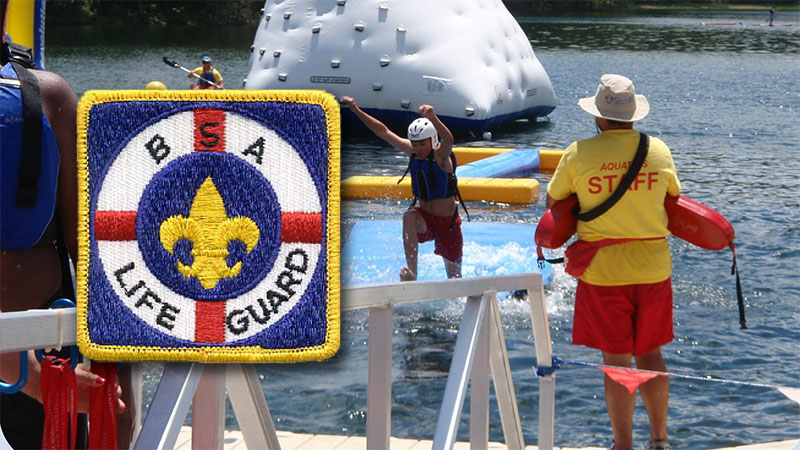
Aquatics
After careful consideration and evaluation, Scouting America will transition away from the Scouting America Lifeguard certification program effective December 31, 2024. Over the last decade, training lifeguards across the entire aquatics industry has continued to evolve. While our partnership with the American Red Cross remains strong, the Red Cross materials will no longer be available to be used jointly for instruction of Scouting America’s Lifeguard program. In addition, Scouting America does not possess the scientific and other resources required to develop and update a Scouting America specific lifeguard training curriculum that meets the industry standards mandated through state and federal regulations.
Moving forward, we believe that partnering with well-established certifying agencies such as the American Red Cross, YMCA, StarGuard Elite, and Ellis & Associates will still allow us to offer local councils access to top-tier lifeguard training. We are confident that this approach will provide Scouting with quality training while also meeting industry standards. Our primary focus is on ensuring that every council has the support it needs to certify lifeguards for both summer camp and year-round aquatic activities.
We will provide further updates in the coming weeks to local councils and currently certified Scouting America Lifeguard Instructors/Aquatics Instructors to ensure everyone is well-informed about the next steps.
Finally, individuals currently certified as Scouting America Lifeguards may continue to use their certification until it reaches its expiration date. Individuals who are certified as Scouting America Lifeguard Instructors will receive additional information on how to potentially transition to an American Red Cross Lifeguard Instructor.
We appreciate your understanding and collaboration as we make this transition, and we are committed to working closely with each council to maintain the high levels of safety and preparedness that our Scouts and leaders expect and supporting local council lifeguard certification programs for summer camp and year-round aquatics programs. Additional information will be posted on this website as plans progress during this transition period.

Range & Target Activities
The Range and Target Activities (Shooting Sports) currently offered by Scouting America are highly complex, requiring knowledgeable supervision, qualified instruction, and strict adherence to standard operating procedures. The following Q&A reviews upcoming September 1st program adjustments that aim to simplify these programs while ensuring safety standards are met. Prior to reviewing these FAQs, please review the upcoming changes listed HERE in the Guide to Safe Scouting.
Q: Why are range and target activities (shooting sports) part of Scouting’s programs?
A: Range and target activities provide Scouting the opportunity to instruct critical safe firearm handling to all age groups while also providing an opportunity for a Scout to learn self-discipline, concentration, mental discipline, self-reliance, self-esteem, problem-solving and responsibility. Teaching safe firearm handling includes conversations such as “What happens when you see a gun? Never touch the gun, leave it where it is, and tell an adult right away.” Scouting is committed to teaching youth how to be safe around firearms, whether at home, in their neighborhoods, or around the community.
Q: Why is Scouting updating its range and target activities (shooting sports programs) effective 9/1/2024?
A: With a focus on safety and delivery of a quality program, these program adjustments aim to simplify and further standardize range and target activities, thus enhancing the overall experience for Scouts and Scouters alike.
Q: Why is the name of shooting sports programs changing to Range & Target Activities?
A: This new name reflects both where these activities take place (on established ranges) and what these activities are.
Q: Starting in September, besides a nationally authorized camp property’s range, Scouts can participate in firearms programs on a commercial range. How will Scouting America define a commercial firearm range?
A: A commercial firearm range is a supervised facility that offers a controlled environment for safe firearm practice. It will provide shooting lanes, targets, and may offer equipment rentals and training in safe firearm handling and marksmanship. Standard operating procedures are required for each firearm type used on-site. Scouting’s range and target activities must follow all of Scouting’s range and target activities policies or range standard operating procedures that are equivalently stringent, including no variation from Scouting’s limitations on firearms used. These ranges may be operated by a licensed business, a government entity or non-profit.
Q: And also, what is a nationally authorized camp property?
A: A national authorized camp property is defined by the National Camp Accreditation Program standards in SA-001. This definition is “A camp property includes any property over which a Scouting America council exercises long-term control that is made available to Scouting America units or individuals for use in Scouting America branded program activities.” For full information on what is a nationally authorized camp property, please review the entire NCAP standard SA-001.
Q: My Scouts BSA troop wants to conduct a weekend activity focused on the Rifle Shooting merit badge, can we still host this event after September 1, 2024?
A: Yes. Scouts BSA troops can offer these activities with the required supervision certifications indicated in the Scouting America Shooting Sports Manual at either a nationally authorized camp property range(s) or at a commercial firearm range. Reminder- your unit must also have someone who has completed the online Range Activity SAFEty training. This trained adult leader must be present at the range. Note this training does not replace the requirements for certified NRA firearms instructors and range safety officers. This training will be available beginning 9/1/2024.
Q: There is a new Range Activity SAFEty training??
A: Yes. On September 1, 2024 this training will be available for unit leaders to take on My.Scouting (the same place you can take Youth Protection training online etc). Less than 40 minutes, this online training will help Scout leaders be prepared to successfully offer these programs at the unit level.
Q: Our Venturing crew is interested in participating in a pistol program. Is it still possible for us to do so?
A: Yes, Venturing crews participate in the NRA FIRST Steps Pistol Orientation at an accredited camp program (day camp, short-term camp, long-term camp) or a council organized one day event. Reminder, effective 9/1/2024, unit-level sponsored/planned Venturing and Sea Scouting pistol programs are prohibited. This program will also be available for older Scouts BSA youth.
Q: How does Scouting define “firearm”?
A: Firearms include pellet rifles, airsoft (any type), rifles, pistols, shotguns, and muzzle loading rifles and shotguns. While Scouting does not define a BB gun or “BB device” as a firearm, some states, counties, or jurisdictions may regulate BB guns as firearms, depending on their design and capabilities. Councils must review and follow any local regulations before conducting programs.
If planning an upcoming event or outing for your unit or council involving range & target activities, please remember to visit Scouting.org on September 1st to review the new National Range & Target Activities Manual and any revisions to the Guide to Safe Scouting.
Still have questions? We invite you to watch a recording of our Range and Target Activities Program Updates (a Venturing focus but all levels are reviewed) webinar that premiered on July 10. You may also attend an additional, Outdoor Program & Properties Team sponsored, webinar on August 15th. The links for both the recording and to register for the upcoming webinar may be found below.
Resources:
- Range & Target Activities Program Updates Discussion and Q&A Registration Link (August 15th Live Webinar)
https://scouting-org.zoom.us/meeting/register/tZEqce2orDotHN378fJ0lxBhit6kJGubesBC
- Range & Target Activities Program Updates Discussion and Q&A (July 10th Recording)
https://scouting-org.zoom.us/rec/share/c7osEzaX53o6tKTSRCcnbDVNmBbhK_19JcNVtbw091wDjMLf2G6ptuMz2-f5FYr8.BiklBNvgl4QfQPM9
- Guide to Safe Scouting (Online Edition)
https://www.scouting.org/health-and-safety/gss/toc/
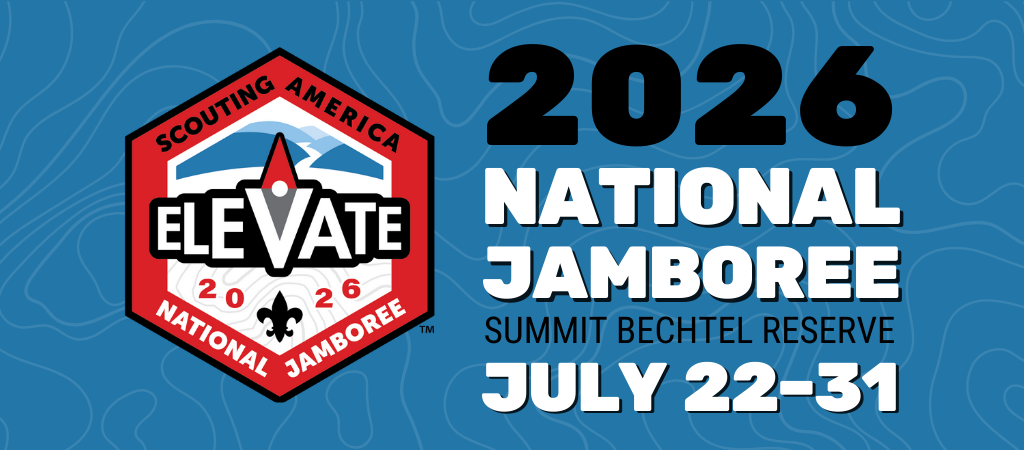
National Jamboree
The National Jamboree is Scouting’s premiere event, bringing together thousands of Scouts and leaders from across the country. If you’ve ever attended a Jamboree, or just hear others talk about it around the campfire, you know it’s a life-changing experience. And we need you to be a part of the staff who make it happen! Serving on the Jamboree staff is an opportunity for Scouts and Scouters aged 16 and up to “Elevate” Scouting for all of those in attendance. Let me give you the top 10 reasons to “Elevate” your Scouting by becoming a Jamboree staff member:
1. The biggest Scouting event of the year
The National Jamboree is like building our own Scouting city, requiring thousands of dedicated volunteers to make it run smoothly. By serving on staff, you’re helping to create lifelong memories for tens of thousands of Scouts, leaders and visitors. Your contribution, no matter the role, is crucial to the success of the Jamboree. You’ll leave knowing you helped to Elevate Scouting’s future.
2. Leadership opportunities
One of the aims of Scouting is leadership development. This is not just for the youth. Jamboree staff positions are leadership development opportunities unlike any other. Whether you’re leading a group of volunteers while running an activity area, or providing behind-the-scenes support, you’ll hone valuable skills such as teamwork, problem-solving, and communication. These experiences not only strengthen your Scouting resume but also give you skills that are transferable to work, school, and other aspects of life.
3. Lifelong friends!
The friendships you form as a Jamboree staffer are one of the main reasons that people return each Jamboree. You’ll work alongside volunteers from all over the country, people who share your passion for Scouting. The bonds you create while working, learning, and having fun together will last a lifetime. You’ll also meet Scouts and leaders from around the world, expanding your Scouting network in ways you never thought possible.
4. Personal growth
Serving on Jamboree staff pushes you out of your comfort zone in the best way possible. You’ll be challenged with new responsibilities, often in fast-paced environments, giving you the chance to grow as an individual. Whether you’re 16 or 60, Jamboree staff service helps you discover new strengths and passions. It’s an experience that will Elevate you personally and that will stay with you long after the Jamboree ends.
5. Staff perks
Being a staff member has its perks! You’ll have access to special staff only areas, receive unique staff swag, and have opportunities to participate in staff-only activities. Plus, being on staff allows you to experience the Jamboree from a behind-the-scenes perspective, offering an entirely different view. From the early staff arrival days to the closing show, your time on staff is filled with exciting, exclusive experiences.
6. Elevate Scouting for the next generation
One of the most meaningful aspects of serving on Jamboree staff is the chance to Elevate Scouting for the next generation of Scouts. The Jamboree is often a life-changing experience for many young Scouts. As a staff member, you play a pivotal role in making that happen. Whether you’re helping a Scout conquer a new activity, teaching a new skill, or simply offering encouragement, you’re shaping the Scouting journey for thousands of youth. Your influence can last long after the event.
7. A chance to give back
For those who’ve benefited from Scouting, serving on Jamboree staff is a powerful way to give back to the program that’s given you so much. It’s an opportunity to invest your time, talent, and passion into an event that strengthens Scouting across the nation. Whether you’ve been involved in Scouting for decades or are relatively new, your service helps ensure that the values of Scouting continue to thrive.
8. FUN!
While there’s plenty of hard work involved, serving on staff is also about having fun. The Jamboree experience is full of adventure. You’ll have a front-row seat to some of the coolest activities and events happening at the Jamboree, the excitement is contagious. Many staffers say they return for friendships and the fun as much as the work itself.
9. Professional experience
Especially if you are a young person or young professional, Jamboree will help you to build your network across the country. You can choose to work in any field of the Jamboree that interests you and will have a chance to meet others who share that same passion. Staff members in the past have used the Jamboree to make connections to help further their professional careers as well. Use the Jamboree as a chance to Elevate your resume not only in Scouting but in connections with other professionals.
10. Be a part of the first Scouting America Jamboree
The Jamboree has been around since 1937 and thousands of Scouts have attended Jamborees and served on the staff. But this Jamboree will be the first for Scouting America. You can’t say you have been to every Scouting America Jamboree if you miss the first one! Even more, you can’t say you have staffed every Scouting America Jamboree unless you staff the first one.
10 1/2. Celebrate America
I know I said top ten, but the Jamboree experience can’t be contained in just 10…So…
Speaking of America, 2026 also marks the 250th anniversary of the USA and we will have a chance to celebrate that milestone as well during the Jamboree. Our Americana Extravaganza will give you an opportunity to celebrate citizenship and celebrate our country in some unique ways as a part of the largest gathering of Scouters. You don’t want to miss it.
So how do you sign up?
Watch the Jamboree website www.jamboree.scouting.org for the latest information. This is also the place where you will find the Jamboree registration link coming this fall. With a variety of roles available, from program areas to logistics, there’s a place for everyone, regardless of your skills or experience level.
Serving on the National Jamboree staff is a rewarding, unforgettable experience. You’ll find value in the friendships, skills, and personal growth that come with being part of the Jamboree staff team. Not only will you help Elevate the experience for thousands of Scouts, but you’ll also walk away with memories that will last a lifetime.
Are you ready to make a difference and be part of Scouting history? Join the Jamboree staff and embark on an adventure like no other!
For more information on the Jamboree staff be sure to check out the Jamboree staff webinar from September 2024 at https://jamboree.scouting.org/councils/jamboree-informational-webinars/
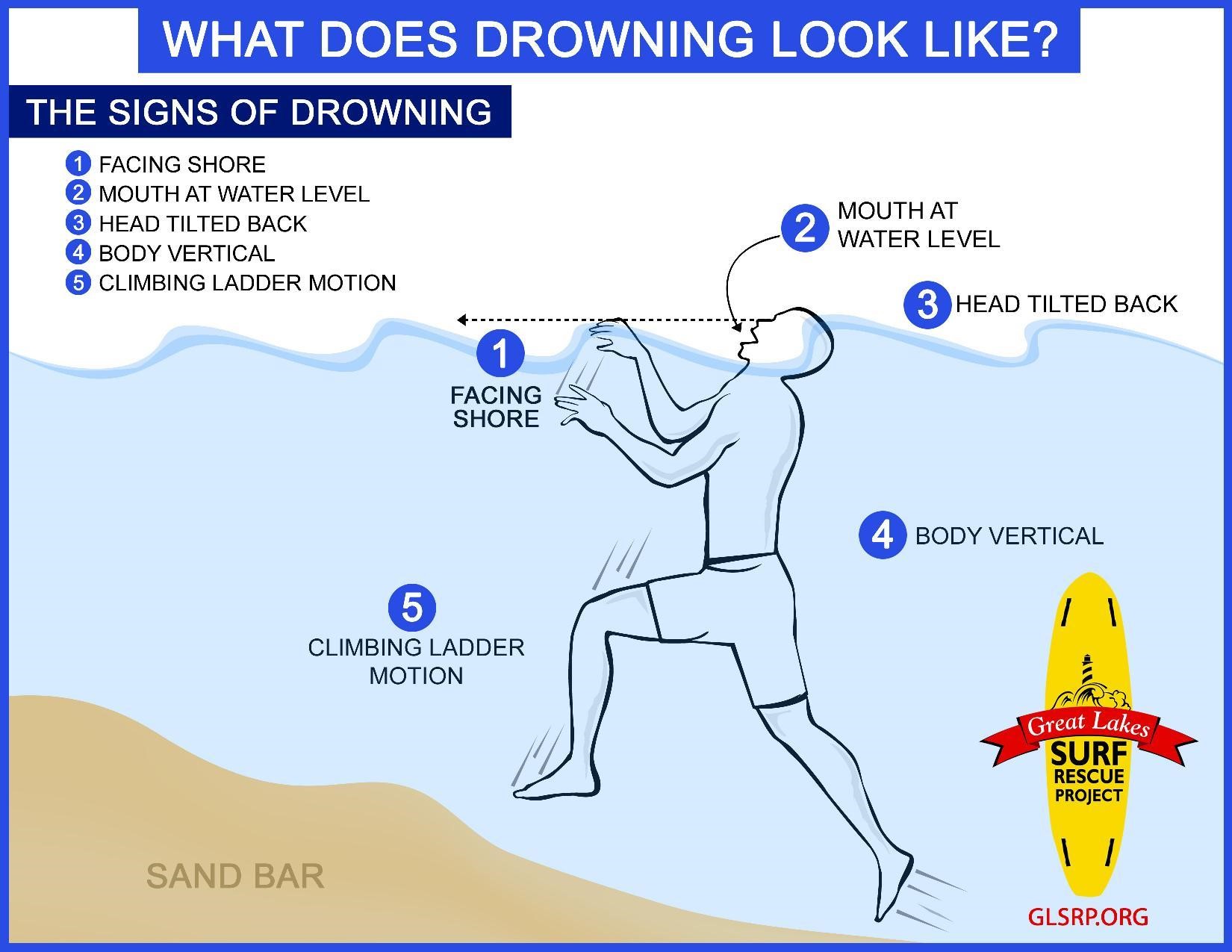
Aquatics
Did you know that the largest percentage of fatal drownings in the United States in kids 19 and younger occur in open water, such as lakes, oceans, and rivers? To get an idea of just how quiet and undramatic from the surface drowning can be, consider this: It is the No. 2 cause of accidental death in children ages 15 and under, just behind vehicle accidents.
Some drownings occur because people do not recognize the signs it is happening. No yelling, no waving. Just a silent gasping for air and 20 to 60 seconds later, submersion. And someone has drowned, maybe in plain sight.
Since the inception of Scouting, learning to swim and engaging in aquatics activities have been core to the program. More than 1.5 million aquatics-related merit badges have been earned by Scouts BSA since 2009. Scouting America has also been a leader in promoting and providing training in aquatics safety. For at least 80 years, checklists have been in place to make sure those aquatic experiences are positive ones.
Safe Swim Defense and Safety Afloat govern Scouting America swimming and boating activities. These programs help provide leaders, Scouts and parents with the tools they need to be prepared to participate in aquatics activities. These programs are Scouting America’s way to conduct a safe and fun aquatics program.
Be prepared for your aquatics adventures this summer!
Email blast!
Email blast!



